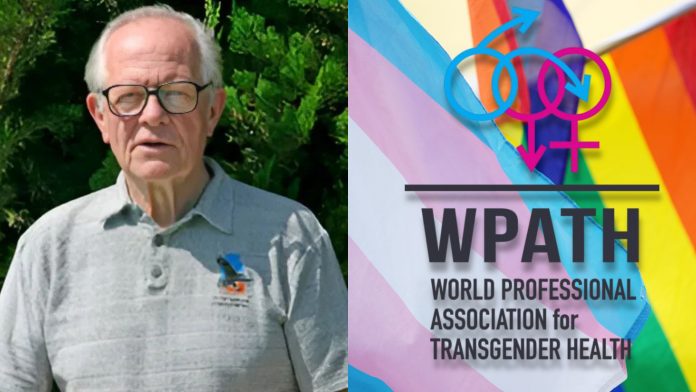Reduxx can reveal that a founding member of the organization now known as the World Professional Association for Transgender Health (WPATH) was in correspondence with and defended a leading figure behind a notorious pro-pedophile lobby group. American sexologist Vern L. Bullough was a pioneering academic involved with the US-based Harry Benjamin International Gender Dysphoria Association, later renamed to WPATH, and served on the editorial team for a pro-pedophile academic publication which advocated for the normalization of adult-child sexual relations.
Bullough was a prominent sexologist. He was Dean of the Faculty of Natural and Social Science at the state university college of Buffalo, New York, in addition to acting as a professor of history at the San Fernando Valley State college. He was also professor emeritus at the State University of New York (SUNY), as well as Faculty President at California State University Northridge, and a president of the Society for the Scientific Study of Sexuality, first established in 1957.
Bullough was the founding director of the Center for Sex Research at Cal State, Northridge, where he organized international conferences on prostitution, pornography, and gender identity. The university now has a clinic offering “gender-affirming care.”
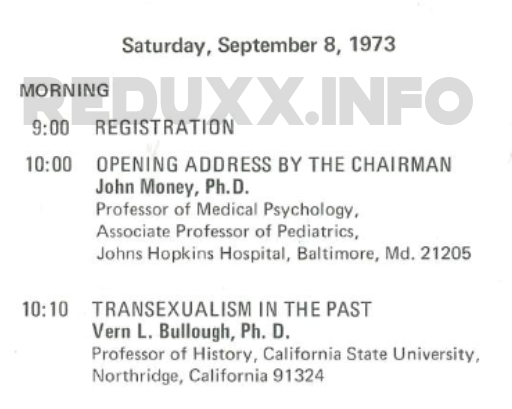
Bullough published and spoke on the topics of transvestitism, transsexualism, gender identity, and child sexuality. In 1973, he was the first speaker to present at a conference organized by the World Professional Association for Transgender Health (WPATH), when it was still known as the Erickson Educational Foundation. His lecture on “Transsexualism in the Past” came directly after an introduction by sexologist John Money, his colleague, who pioneered the development of the concept of “gender identity” and medical “transition.”
His most well-known books include “Sexual Variance in Society and History” (1976), “Homosexuality: A History” (1979), and “Cross-Dressing, Sex and Gender” (1993), which is still used as a textbook in some university gender studies programs.
In addition to his role in the early formation of WPATH, Bullough was a member of the editorial board of Paidika: The Journal of Paedophilia, which advocated for sexual relationships between adults and children.
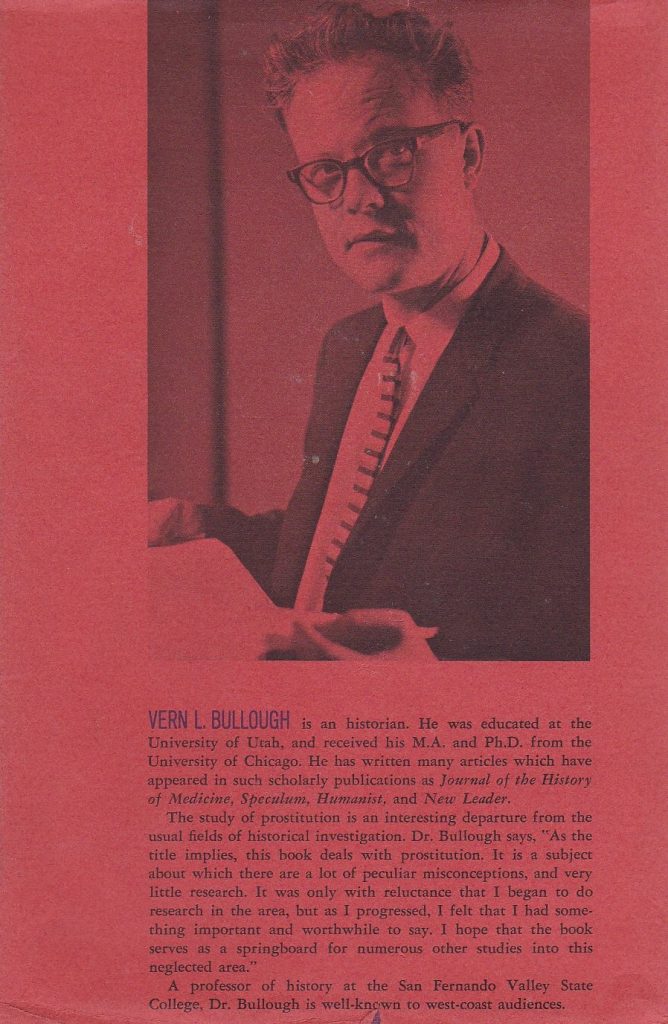
In 1996, Bullough was interviewed for Paidika by editor Joseph Geraci — with whom he maintained a close working relationship, as Bullough’s position on the editorial board lent academic credence to the pro-pedophile journal.
Despite repeatedly arguing that his interest in the topic of pedophilia, or “intergenerational sex,” as he referred to it, was purely academic, Bullough revealed during the Paidika interview that he believed there was a “hysteria” surrounding the topic of child sexual abuse, and blamed “feminists” for the widespread opposition to pedophilia.
“The feminist influence also most certainly is a factor in the hysteria,” Bullough said. “Some radical feminists, though thankfully a minority, have gone so far as to claim that every female child was probably sexually abused in some way by a male member of their family, and can even define sexual abuse as show-and-tell and other childhood activities.” Bullough did not provide a reference for his claims in regards to his argument.
“I do not subscribe to their version. Unfortunately, many of these most militant feminists are involved in the child-abuse industry,” he added. Bullough defined the term “child-abuse industry” as involving individuals he saw as profiting from the “hysteria” over childhood sexual abuse.
“Paedophiles have become the scapegoat for everything that seems to be wrong with American society and the family,” Bullough continued. “We have institutionalized the hysteria… Paedophiles are so excluded from mainstream American society that they cannot really say what they do or what they believe in.”
But perhaps most disturbingly, Bullough kept regular correspondences with a top member of the North American Man Boy Love Association (NAMBLA), a lobby group that advocates for the normalization of sexual relationships between adult men and young boys.
Attorney Lawrence Stanley was a member of the steering committee for NAMBLA, which advocated for relaxing laws regarding sexual activity between men and boys. Stanley also published a newsletter titled “Uncommon Desires,” which focused on pedophilic relationships between adult men and young girls.
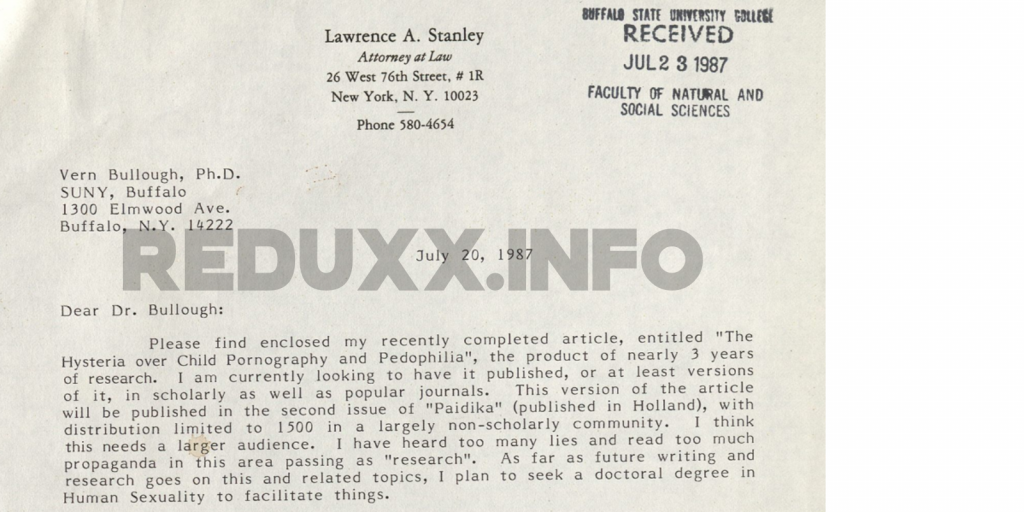
In July 1987, Stanley wrote to Bullough imploring him to read and consider his article “The Hysteria over Child Pornography and Pedophilia,” which was soon published in Paidika and Playboy. In an introductory letter, Stanley told Bullough: “With respect to sizeable collections of child pornography, it is my impression that the Kinsey Institute’s is larger than the Institute for Advanced Study of Human Sexuality.”
Stanley’s article, “The Hysteria over Child Pornography and Pedophilia,” argued that law enforcement officers engage in deliberate entrapment schemes. “Under the guise of ‘protecting children,’ millions of taxpayer dollars have been spent to investigate and prosecute would-be consumers of child pornography, many of them individuals who do not pose any immediate danger to children.”
Stanley went on to describe at length various international publications specializing in pedophilic content to the sexologist, and stated that the “largest source for erotic depictions of young girls is Japan.” The NAMBLA attorney added: “I hope this information has been both interesting and helpful to you.”
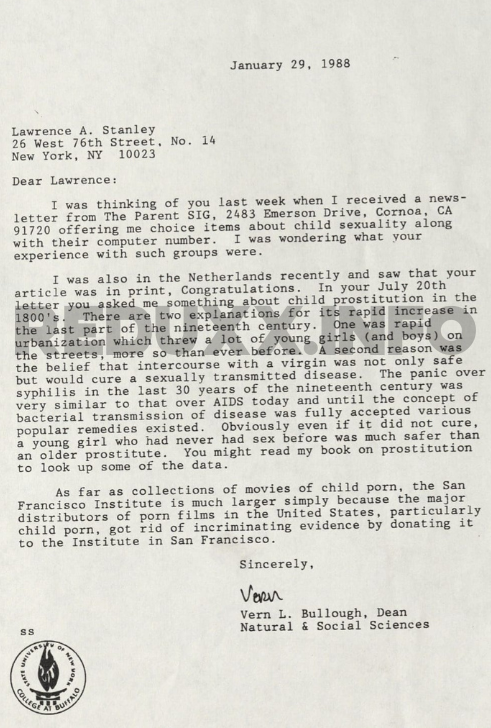
Bullough replied in a letter dated January 1988, congratulating Stanley on the publication of his article.
“As far as collections of movies of child porn, the San Francisco Institute is much larger, simply because the major distributors of porn films in the United States, particularly child porn, got rid of incriminating evidence by donating it to the Institute in San Francisco.”
In a follow-up letter the next month, Bullough suggested: “If you get good duplicates of material and don’t know where to send them, I would like to add to my collection, most of which is now in the California State University, Northridge, library.”
In September 1989, Stanley was found in possession of hundreds of child pornography publications, as well as five videotapes, which he had kept locked in a safe under his bed. Various titles of the magazines included Bambina Sex, Children Love, Lolita Color Special, Loving Children, Masturbating Lolita and Schoolgirls.
Most of the photographs depicted very young girls with their genitalia exposed. In certain instances, children were seen to be masturbating or urinating, and other photographs depicted prepubescent girls engaged in oral sex with adult men.
In his defense, Stanley claimed to be a sex researcher acting on behalf of The Institute for Advanced Study of Human Sexuality, and claimed that that as an academic researcher, he was entitled to possess the child pornography under the First Amendment.
Stanley testified in court that the pornography was acquired in connection to research he was conducting on the topic of “The Child Pornography Myth,” an article he authored which was published in the Cardozo Arts and Entertainment Law Journal. The magazines were obtained in the Netherlands, where the journal Paidika was published — and where Bullough had himself just visited.
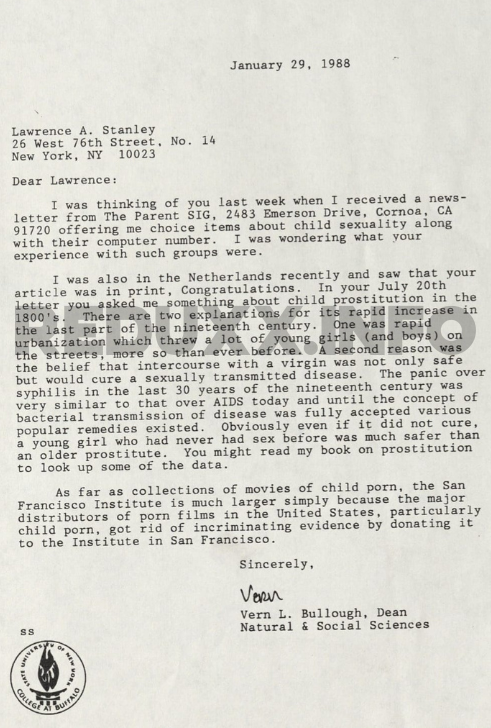
As the court proceedings were underway in 1991, Bullough submitted a character testimonial in favor of Stanley, calling him a “knowledgeable professional in the field of human sexuality,” and that he would “strongly vouch for his character and integrity.”
Bullough wrote: “I have known Lawrence Stanley for four or five years and worked closely with him for part of that time in publishing a newsletter for the Society for the Scientific Study of Sex.”
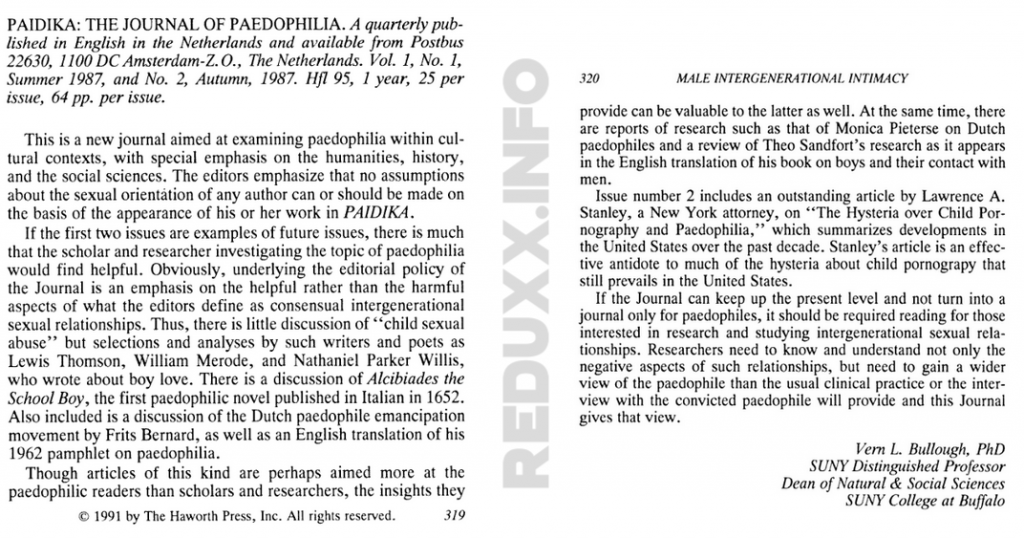
In 1993, federal authorities accused Stanley of conspiring with photographer Don Marcus to import child pornography. Marcus fled to France to escape prosecution, and asked Stanley to retrieve a suitcase that was found to contain child pornography. His attorney argued that Stanley did not know what was in the suitcase, and a jury acquitted him in 1993.
It was during this time that Bullough again argued in his defense and sent him multiple letters of reference. The academic leveraged his credentials in universities and as an expert in the area of modern sex research.
“I can speak with some expertise on the subject of child pornography. I know of few topics more deserving of intense, scholarly investigation than child porn, a topic about which there is both a great deal of hysteria couple with a lack of information,” Bullough prefaced.
The professor then pleaded for the release of the “seized material,” referring to the child pornography magazines that were confiscated by authorities. He requested that Stanley “and others” should be permitted to “examine” the pornographic content, and that it might be “deemed suitable for widespread publication.”
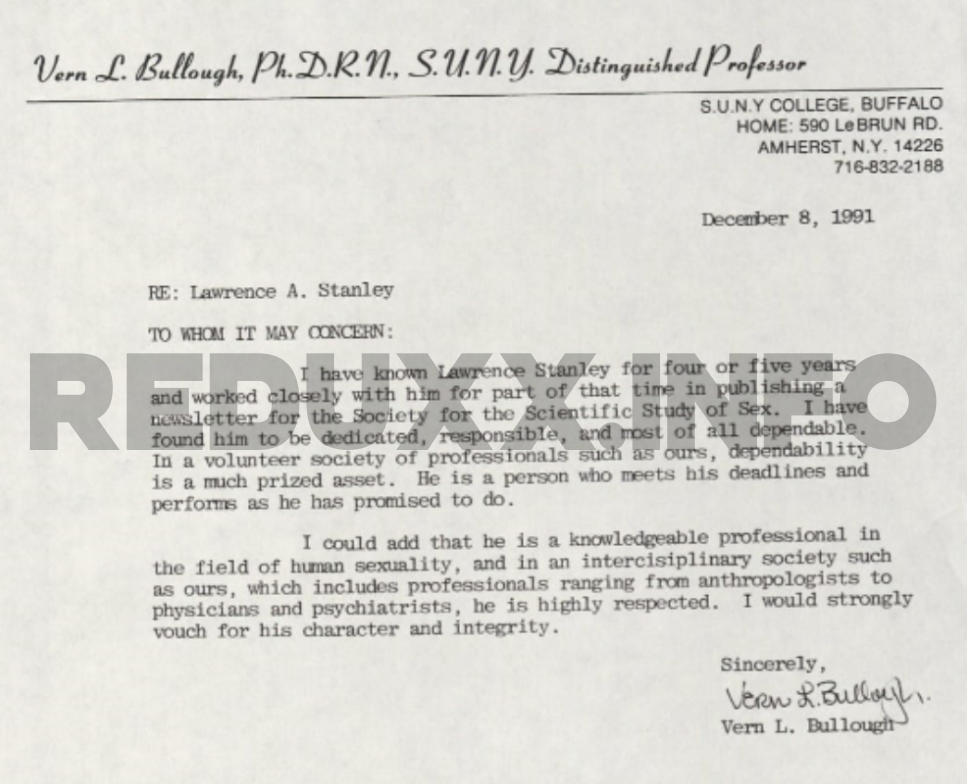
“In the past we used to cover up child abuse, now we exploit it and exaggerate it,” Bullough said. “What we need is to do some serious investigation. Lawrence has an effective methodology to study the materials, and should be allowed to continue the studies he started.”
In 1998, a Dutch court convicted Stanley in absentia for the sexual abuse of three children ages 7 to 10. As Stanley’s legal troubles worsened, he fled the United States for Brazil. In 2002, he was arrested on charges of child exploitation. Stanley had built an international business photographing Brazilian girls and selling their photos online. Stanley’s “MiniModels” web site featured photos of girls ages 8 to 14 in what authorities described as “sensual poses.” Police said Stanley paid the girls $20 to $40 for each photo session.
Bullough was also a main organizer of the World Pornography Conference, with the first event taking place in 1998 at the Center for Sex Research at Cal State Northridge, with the financial backing of the pornography industry’s lobby group, the Free Speech Coalition.
One journalist, Matt Balash, who attended the 1998 conference took note of a presentation on child pornography, which included photos of a boy holding the photographer’s penis.
“Dr. Bullough thought it was OK as long as the photographer was a professional and had obtained permission from the parents. Dr. Bullough related how his kids used to pull on his schwong in the shower. Matt asked if Dr. Bullough invited other children into the shower to pull on his schwong. A conference organizer and hospitality lawyer stepped in to reprove Matt for asking inappropriate questions.”
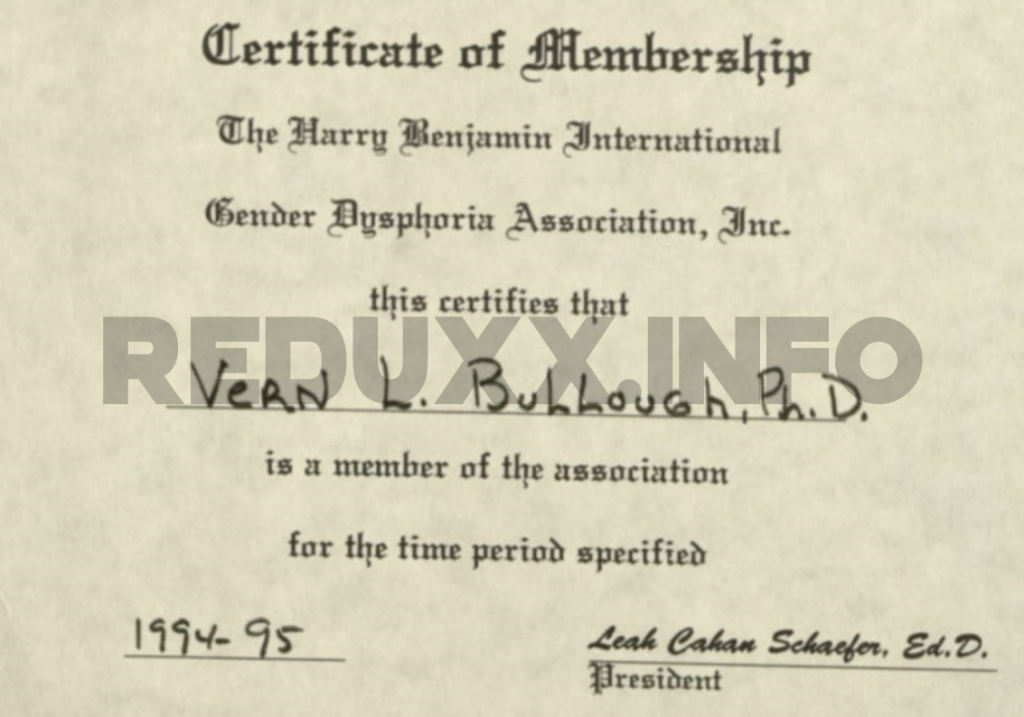
When Bullough passed away in 2006, his obituary, published by the Los Angeles Times, was penned by former WPATH president, and former president of the Society for the Scientific Study of Sexuality, Eli Coleman.
“It would be very hard to find somebody that had so extensively studied so many areas within sexuality,” Coleman said. “Vern was all over the field — not in a superficial way but in a very deep way.”
Reduxx is your source of pro-woman, pro-child safeguarding news and commentary. We’re 100% independent! Support our mission by making a donation.
